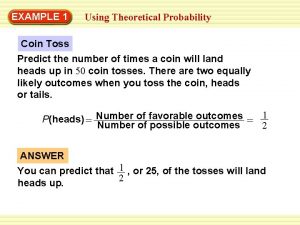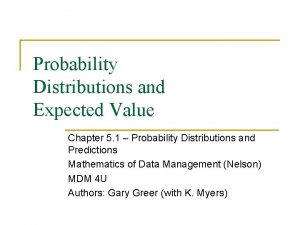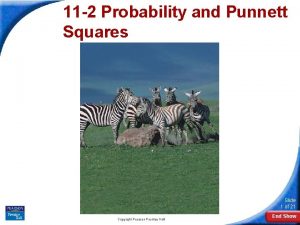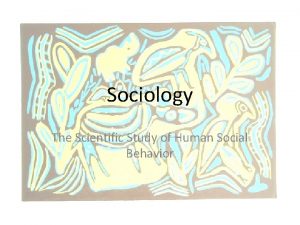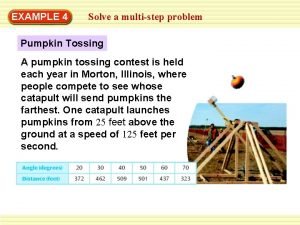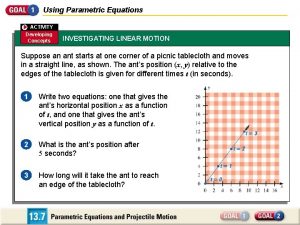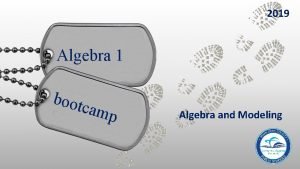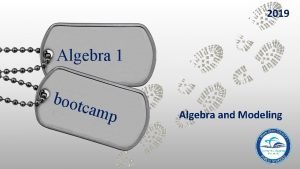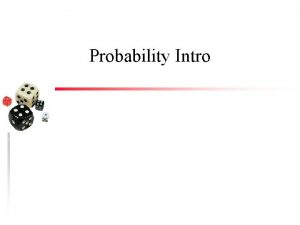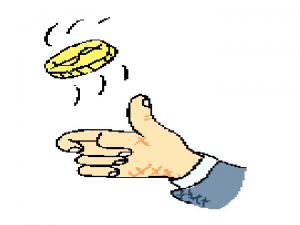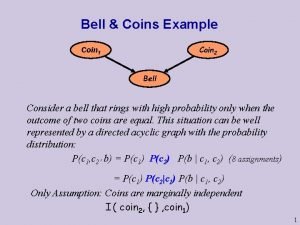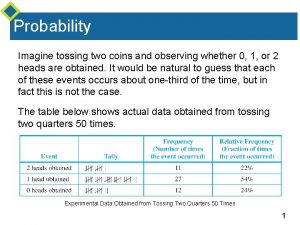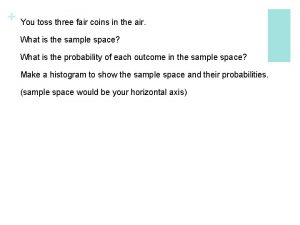Genetics Tossing Coins If you toss a coin

















- Slides: 17

Genetics

Tossing Coins �If you toss a coin, what is the probability of getting heads? Tails? If you toss a coin 10 times, how many heads and how many tails would you expect to get? Working with a partner, have one person toss a coin ten times while the other person tallies the results on a sheet of paper. Then, switch tasks to produce a separate tally of the second set of 10 tosses.

Vocabulary �Genetics: � the scientific study of heredity �Allele�one of a number of different forms of a gene �Trait�specific characteristic that varies from one individual to another

Vocabulary �Phenotype�physical characteristics of an organism �Genotype� genetic makeup of an organism Bb

Vocabulary �Homozygous�term used to refer to an organism that has two identical alleles for a particular trait. �Heterozygous�term used to refer to an organism that has two different alleles for the same trait.

Vocabulary �Hybrid - offspring of crosses between parents with different traits �True-breeding- - term used to describe organisms that produce offspring identical to themselves if allowed to self-pollinate

Vocabulary �Probability - likelihood that a particular event will occur. �Punnett Square - diagram showing the gene combinations that might result from a genetic cross.

Genetic Notes 1. Genes and Dominance a. Mendel studied different traits with contrasting characteristics b. Traits- a specific characteristic such as seed color or plant height that varies from one individual to another. c. Hybrids- Offspring of parent crosses with different traits d. Genes- chemical factors that determine traits (height) e. Alleles- different forms of a gene (short or tall)

Genetic Notes f. Principle of dominance: Alleles can be dominant or recessive i. Dominant: trait is always seen Ii. Recessive: trait is seen if dominant is not present

Genetics Notes 2. Genetics & Probability a. b. Probability- the likelihood that a particular event will occur The principles of probability can be used to predict the outcomes of genetic crosses

3. Punnett Squares a. Punnett Square is a diagram used to determine the gene combinations that might result from a genetic cross (the offspring from two chosen parents) b. Letters in the squares represent alleles Capital letters for dominant alleles Ii. Lowercase letters for recessive alleles i.

Homozygousorganisms that have two identical alleles for a particular trait (TT or tt) : are truebreeding d. Heterozygousorganisms that have two different alleles for a particular trait (Tt) : are hybrid c. TT Tt

e. Offspring can have the same phenotype but different genotypes i. Phenotype- physical characteristics ii. Genotype- genetic makeup

4. Probability and Segregation Mendels results showed i. Homozygous dominant = ¼ (25%) ii. Heterozygous = ½ (50%) iii. Homozygous recessive = ¼ (25%) b. The ratio of tall plants to short is 3: 1 c. Due to the 75% dominant traits showing and 25% recessive traits showing, Mendel concluded that segregation occurs a.

Review � What is probability? � The likelihood that a particular event will occur. � What is a punnett square? � A diagram that shows all gene combinations that might result from a genetic cross.

Review � How are the principles of probability used to predict the outcomes of genetic crosses? � The way which the alleles segregate is random and probability allows the calculation of the likelihood that a particular allele combination will occur in offspring.

Review �What are dominant and recessive alleles? �Dominant allele: allele whose from of a trait always show up in an organism if the dominant allele is present �Recessive allele: allele whose form of a trait shows up only when the dominant allele is not present.
 Random experiment
Random experiment 3 coin toss probability
3 coin toss probability A football game customarily begins with a coin toss
A football game customarily begins with a coin toss A football game customarily begins with a coin toss
A football game customarily begins with a coin toss Coin toss
Coin toss A football game customarily begins with a coin toss
A football game customarily begins with a coin toss Section 11-2 probability and punnett squares
Section 11-2 probability and punnett squares Scientific study of social behavior and human groups
Scientific study of social behavior and human groups Dwarf tossing record
Dwarf tossing record A pumpkin tossing contest is held
A pumpkin tossing contest is held In a pumpkin tossing contest in morton illinois
In a pumpkin tossing contest in morton illinois Canyouunit
Canyouunit Parable of the gold coins
Parable of the gold coins Mass of coins
Mass of coins Denarius in jesus time
Denarius in jesus time Algebra 1 bootcamp algebra and modeling
Algebra 1 bootcamp algebra and modeling Algebra 1 bootcamp functions and modeling answer key
Algebra 1 bootcamp functions and modeling answer key Advantages of vending machine
Advantages of vending machine
